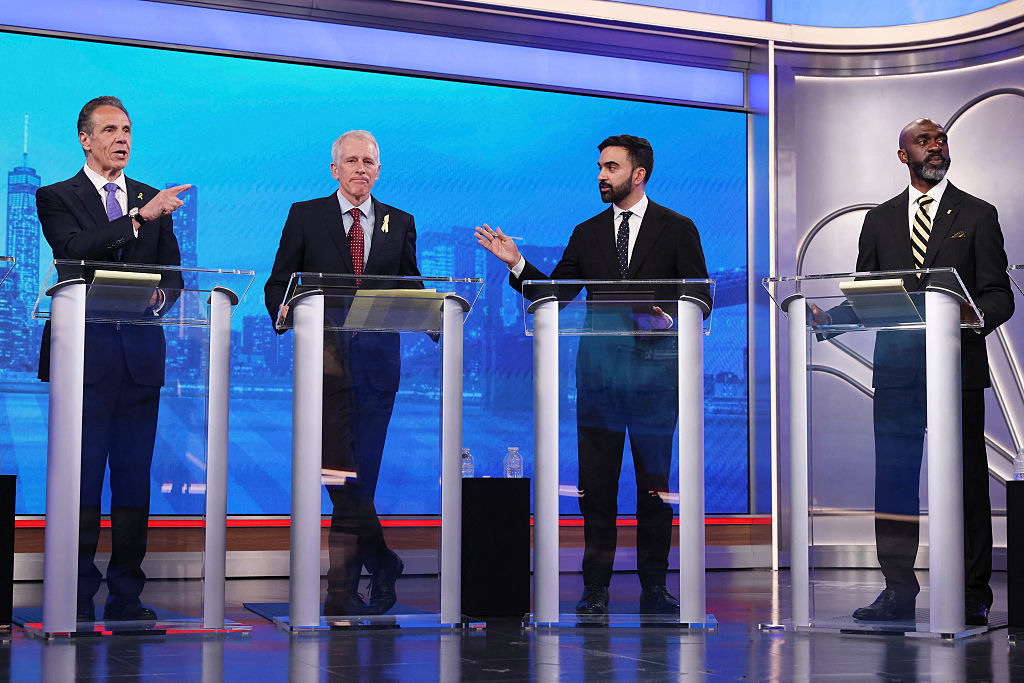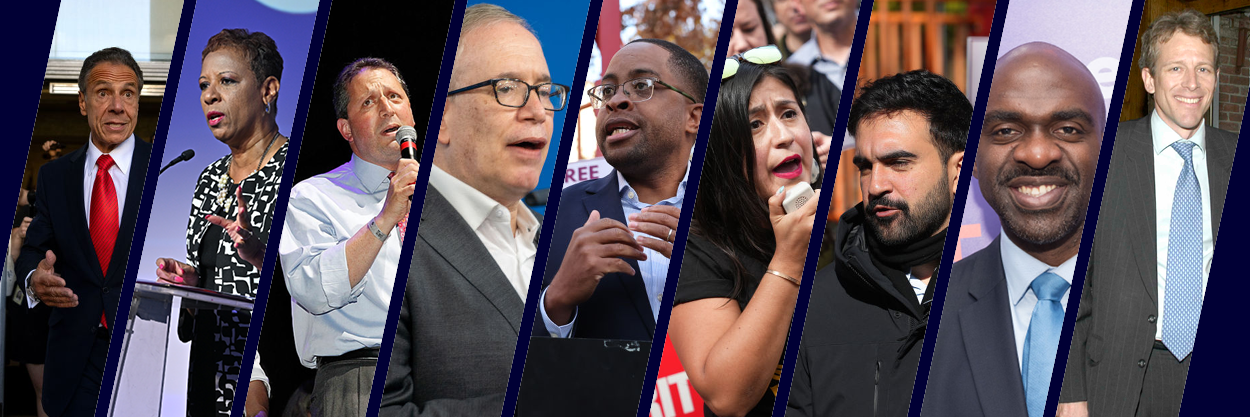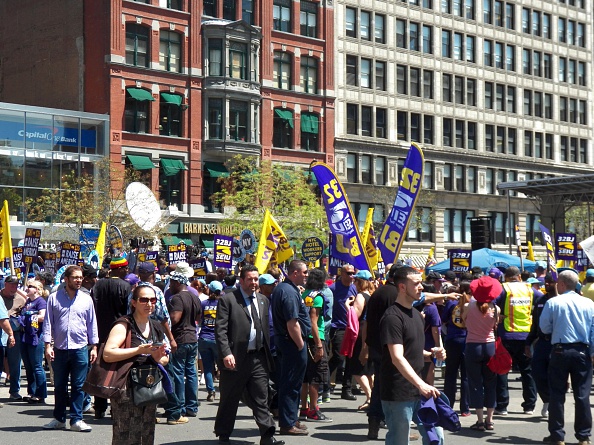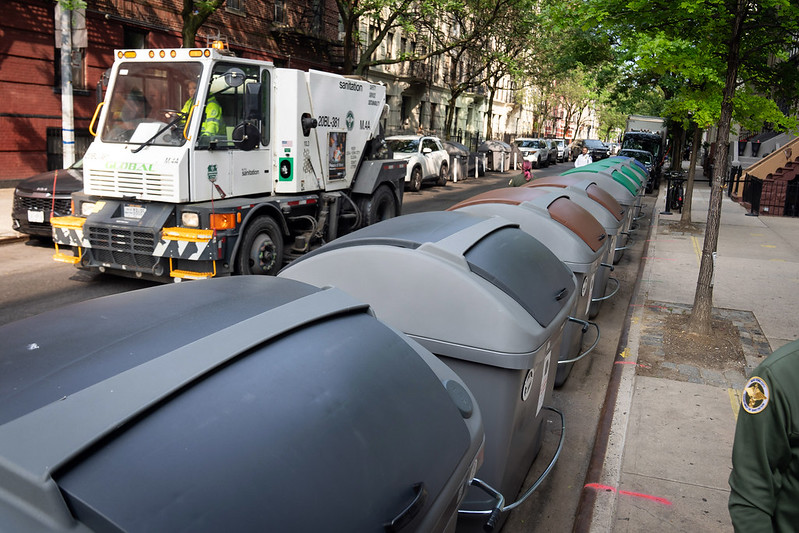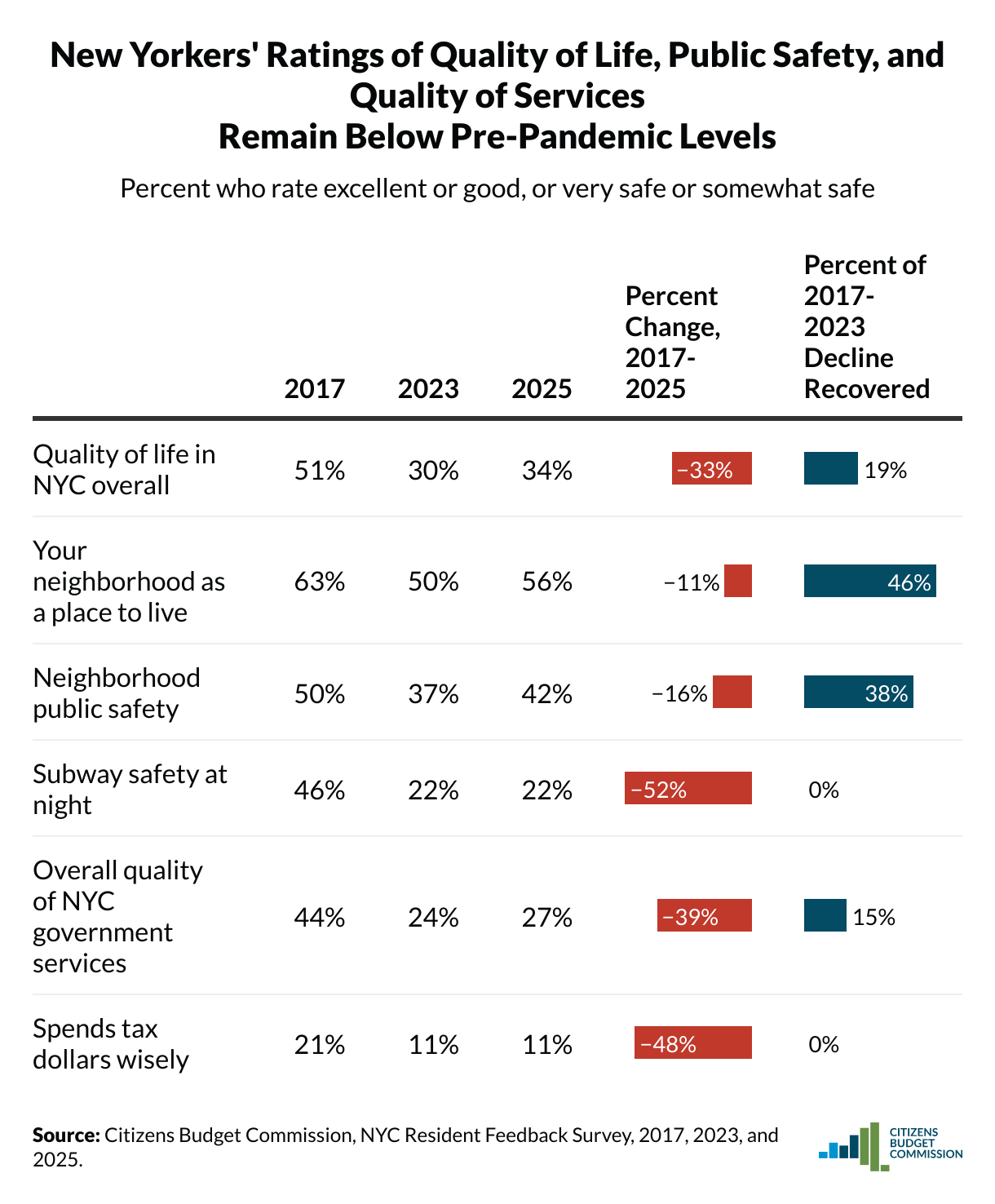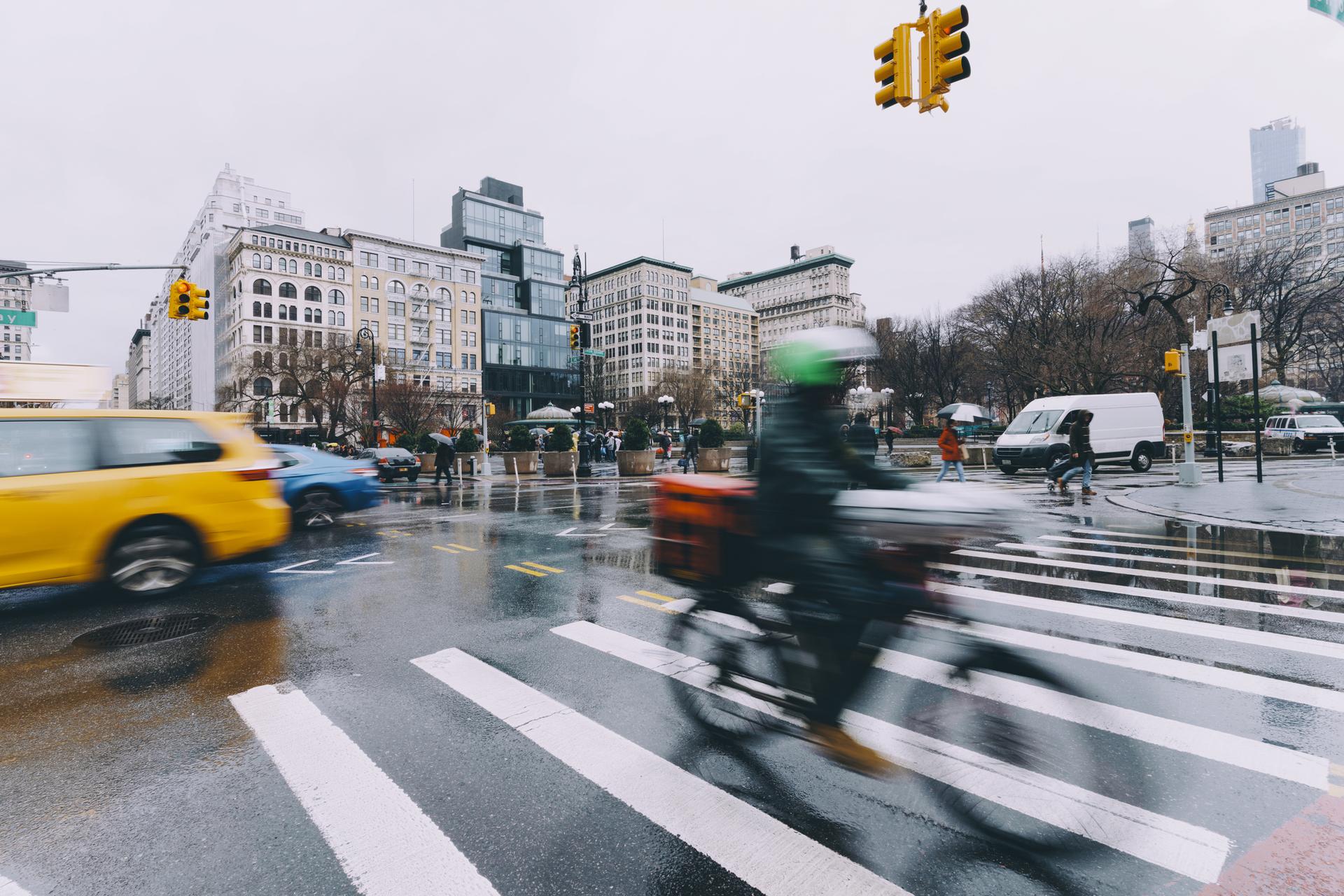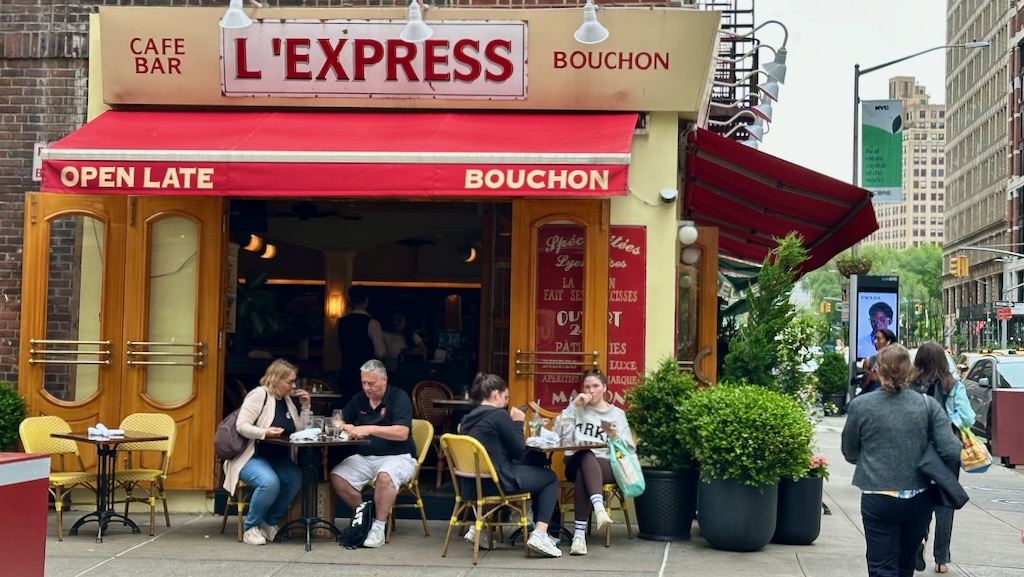|
Forwarded this email? Sign up for free to have it sent directly to your inbox.
|
|
|
L-R Democratic mayoral candidates Andrew Cuomo, Whitney Tilson, Zohran Mamdani and Michael Blake during the mayoral debate. (Photo by YUKI IWAMURA/POOL/AFP via Getty Images) |
We're just under three weeks out from the Democratic primaries, early voting starts on June 14, and we're talking about the first mayoral debate that took place on Wednesday, unions, e-bikes and data on New Yorkers. Thanks for reading!
— Liena Zagare
Did someone forward you this email? Sign up to get it in your inbox every Friday. It’s free. I would also love to hear who you are supporting in this mayoral race, and why. Drop me a line at LZagare@manhattan.institute. |
Wednesday's mayoral debate crystallized the dynamic that's been brewing in New York City's mayoral race: Andrew Cuomo and Zohran Mamdani dominating from opposite edges of the race, effectively sucking all oxygen from the middle lane.
Mamdani's energetic calls for a democratic-socialist overhaul are the surprise of the race. Cuomo, darkly warning of a "city in crisis," is the only Democrat really going after him. Recent polls underscore this polarization: Emerson/PIX11 puts Cuomo at 35% and Mamdani at 23%, with moderates like Brad Lander (10.5%), Scott Stringer (9%) and Adrienne Adams (8.3%) languishing behind.
And yet, despite this clear opportunity, most of the centrist and center-left are hesitant to challenge Mamdani directly. Whitney Tilson has been the notable exception, openly questioning Mamdani's economic practicality and ideological purity, with Scott Stringer to a lesser degree. But why aren't others following their lead? Candidates like Lander and Adams have seemingly prioritized caution over confrontation, perhaps wary of alienating progressive blocs crucial for second-choice votes in New York's ranked-choice system.
Yet this strategic caution comes at a price: They're allowing Mamdani to solidify his position, overshadow more moderate alternatives, and even make the democratic socialist appear closer to the center than he is.
Voters consistently express anxiety over affordability, crime, and housing—issues better served by practical incrementalism rather than ideology. And that middle of the electorate hasn't vanished; it's being ignored. The space created by Mamdani and Cuomo is precisely where moderates could thrive, articulating pragmatic solutions attractive to the broadest spectrum of New Yorkers.
History has repeatedly shown that you can be nice or you can be mayor—but rarely both. Cuomo remains vulnerable, with high unfavorable ratings and after a rough debate. The relative moderates lagging behind in the polls—Lander, Adams, Myrie—have little to lose by aggressively confronting Mamdani's plans, testing his appeal with voters skeptical of radical promises. After years of voters lamenting elections as a choice between the "least worst" options, there's room for an appealing, sensible alternative.
The question for New Yorkers, then, isn't simply how much radical change they desire but whether moderates will find their voice before voters feel forced to choose between restoration and revolution once again. |
|
|
From Left: Andrew Cuomo, Adrienne Adams, Brad Lander, Scott Stringer, Zellnor Myrie, Jessica Ramos, Zohran Mamdani, Michael Blake, Whitey Tilson. Photos via Getty Images. |
In Short: The first official mayoral debate took place on Wednesday night and likely did not change many people's minds - there were too many candidates, and not enough time. Politico has an excellent play-by-play lineup of takeaways, but in short, everyone attacked Cuomo. Mamdani refused to answer if he believed in a Jewish state of Israel and whether he would visit Israel as mayor. Cuomo, Tilson, and Ramos brought up Mamdani's lack of experience. Everyone will be tough on Trump, and no-one wants to be associated with "defund the police." The next mayoral debate is next Thursday, June 12. Early voting begins June 14.
Unexpected: Brad Lander gave MI's work a shoutout during the debate, saying it informed his plan to combat retail thefts and other low-level crimes. He specifically said that "drug treatment courts need to be central in our response." (See MI's Stephen Eide's work for why he might say that.)
Endorsement Watch: Rep. Alexandria Ocasio-Cortez (AOC) endorsed Zohran Mamdani, followed by Adrienne Adams, Brad Lander, Scott Stringer, and Zellnor Myrie. The lefty Working Families Party endorsed Mamdani, followed by Brad Lander, Adrienne Adams, Zellnor Myrie, and Jessica Ramos. With just over a week until early voting starts, UFT, the city's largest public-sector union, still has not endorsed.
Cross Endorsements: So far, there have been none, though during the debate, Mamdani said he would announce a second-choice pick before Election Day, and Myrie said to "stay tuned."
The Ethnic Vote: The Far Rockaway Jewish Alliance, an influential Orthodox group in Queens, endorsed Cuomo despite reservations over the COVID restrictions. The chair of the Congressional Black Caucus, Rep. Yvette Clarke, endorsed Adrienne Adams. The chair of the Congressional Hispanic Caucus, Rep. Adriano Espaillat of Manhattan and the Bronx, endorsed Cuomo last month. Rep. Nydia Velázquez endorsed Adrienne Adams, Mamdani, and Lander in April. The Congressional Asian Pacific American Caucus chair, Rep. Grace Meng of Queens, has yet to endorse.
Republican Council member Vicki Paladino's post on X, aimed at Zohran Mamdani, stirred up controversy for questioning whether someone who's been a citizen for less than ten years should be elected to office, ending with a "Deport." Mamdani was born in Uganda, came to the USA when he was seven, and became a citizen in 2018.
Can Zohran Mamdani's Volunteer Army Pull Off the Upset? His campaign boasts 29,000 door-knockers. (THE CITY) If Andrew Cuomo Has a Regret, It's Resigning as Governor. (NYT)
|
|
|
The High Cost of Union Control in NYC |
Photo by Mark Apollo/Pacific Press/LightRocket via Getty Images |
Getting control of the city’s finances will require confronting labor on benefit costs and resistance to innovation, Ken Girardin writes in the City Journal. Public-sector unions wield outsized control over city employee benefits, driving up costs with limited transparency or accountability. The city spends over $8 billion annually on health insurance alone, plus nearly $4 billion for retiree coverage—far more than peer cities.
A union-led committee (the MLC) manages these benefits without sufficient public oversight, resulting in expensive, inefficient programs. Past reform efforts, including shifting retirees to Medicare Advantage to save hundreds of millions, have stalled due to union opposition. Girardin argues that the next mayor must reclaim oversight, improve transparency, and modernize benefits administration to secure NYC’s fiscal health. |
More Containers, More Cops, Higher Prices |
100 percent of trash in Manhattan Community Board 9 is now containerized. Photo: Ed Reed/Mayoral Photography Office. |
Sanitation: The city has launched a containerized trash collection in Manhattan's Community Board 9, replacing sidewalk garbage piles with nearly 1,100 large "Empire Bins" installed in curbside parking spaces. Buildings over 31 units must use the bins mechanically emptied by specialized trucks, while smaller buildings have wheelie bin options. Streetsblog has a deep dive into how it all works.
Crime: In How New York's Next Mayor Can Make the Subways Safer, Nicole Gelinas argues that NYC's subway system requires a larger police presence, not a reliance on overtime shifts. The city's current strategy, dependent on temporary overtime shifts, lacks permanence and effectiveness, she argues and recommends expanding the transit police force, now significantly smaller than its 1991 peak, and returning to consistent enforcement of quality-of-life offenses alongside more transparent transparency about intervention outcomes.
Education: The number of school safety agents has shrunk by 28% since 2020 due to low pay, slow hiring, and high attrition. Principals warn this shortage compromises student safety, creating delays at metal detectors and gaps during busy school entry times. While some advocates suggest this is an opportunity to move away from NYPD oversight towards alternative safety models, mayoral hopefuls remain divided on balancing police presence and support services. (Chalkbeat) Kids got an extra day off school next year, January 2, which falls on a Friday, reflected in the updated public school calendar for the 2025/26 school year.
Tariffs: A new report from the New York Fed reveals that businesses in the New York–Northern New Jersey region are largely passing tariff-related costs directly to consumers. Approximately 75% of firms surveyed said they had raised prices in response to recent U.S. import tariffs, with nearly half of service firms and one-third of manufacturers fullypassing on these higher costs.
|
Data: Straight from New Yorkers 2025 |
The latest Citizens Budget Commission report, Straight from New Yorkers 2025, offers a sobering snapshot of resident dissatisfaction across the five boroughs. Only 34% of New Yorkers currently rate the city's quality of life as excellent or good—down sharply from 51% eight years ago. Public safety perceptions have also notably worsened: less than half of respondents feel safe in their own neighborhoods, and subway safety ratings are particularly grim, with a mere 22% feeling secure riding at night.
These frustrations aren't distributed evenly. Residents of the Bronx, as well as Black and Hispanic communities, report the lowest satisfaction with city services and safety. Alarmingly, higher-income residents are also becoming increasingly unhappy, narrowing previous perception gaps across income levels. The city's performance on essential services remains disappointing, with most rated as fair or poor.
Perhaps most concerning is residents' outlook: only 55% plan to stay in New York City over the next five years, with affordability, safety, and housing space topping their concerns. The full report provides deeper insights into what's driving residents' frustrations—and what it might take to turn sentiment around. |
Not So Fast: Speed Limit(er)s And Summonses |
Mayor Adams proposed this week that e-bikes, electric scooters, and pedal-assist commercial bicycles should have a speed limit of 15 miles per hour, which currently applies to stand-up e-scooters. For perspective, the average walking speed is about three miles per hour. With e-bikes legally permitted to reach speeds up to 20 mph in the bike lanes and 25 mph on streets—far faster than Manhattan's average car speed of under 10 mph—pedestrians frequently perceive them as dangerously quick and too close, amplifying concerns about street safety.
Cycling advocates are protesting the NYPD's recent crackdown on e-bike riders, arguing that issuing criminal summonses for offenses like sidewalk riding or running red lights disproportionately impacts food delivery workers, many of whom may face severe consequences if summoned to criminal court. Police counter that standard traffic tickets are ineffective for unregistered e-bikes, leaving them with few enforcement options to address community concerns about reckless riding.
The city is also pushing state lawmakers to pass a "super speeders" bill, mandating speed-limiting devices for cars and drivers repeatedly caught speeding. It is also advocating renewing its speed camera program, which expires on July 1. |
|
|
Cafe L'Express Bouchon. Photo by Liena Zagare |
L’Express Bouchon (249 Park Ave South) is a classic French bistro with a cozy atmosphere ideal for casual business meetings or after-work gatherings. Conveniently located near Union Square, it offers reliably good French fare and attentive but unobtrusive service—a great spot if you don't mind a bit of background buzz. Opens for breakfast at 9 a.m., closes at midnight or later.
|
Thank you for reading to the end! If you’re enjoying this newsletter, please consider recommending it to others. They can sign up here. |
|
|
|
If you missed it, you can watch / listen to the full two hours of the first NYC 2025 mayoral debate at the link. |
|
|
A weekly newsletter about NYC politics and policy,
published by the Manhattan Institute, edited by Liena Zagare. |
|
|
Copyright © 2025 Manhattan Institute, all rights reserved.
|
|
|
|

